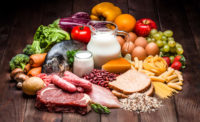
Since the 1970s, the federal Special Supplemental Nutrition Program for Women, Infants, and Children, known as WIC, has provided American moms, babies, and young children with specialized packages of nutritious foods and nutrition education. It is a pivotal program in our nation’s nutrition security safety net and an important means for millions of Americans to access nutritious dairy products for their families.
Yet, a new proposal from the U.S. Department of Agriculture (USDA) threatens to cut the benefits provided to WIC beneficiaries to purchase milk and other dairy products, thereby reducing access to critical nutrients at a time of high food cost inflation and declining food security. Without a reversal from USDA, WIC mothers and children will have to adapt to live with reduced dairy benefits for many years to come.
Most importantly, USDA’s decision to cut WIC benefits for the purchases of milk and dairy flies in the face of the latest nutrition science and dietary guidance from the USDA itself. The 2020-2025 Dietary Guidelines for Americans (DGA) note that a staggering nearly 90% of the U.S. population does not consume enough dairy to meet dietary recommendations. The vast body of nutrition science demonstrates that nutritious dairy products like milk, yogurt, cheese, and cottage cheese are especially important in the diets of women, infants, and children.
Dairy is a source of 13 nutrients, including three of the four nutrients (calcium, potassium, and vitamin D) of public health concern as noted by the DGA, which is why dairy has always played a significant role in the WIC program.
USDA’s cuts also happen at a particularly inopportune time, as food cost inflation remains high, the U.S. economy is on the cusp of a recession, and nutrition security has faltered amid years of pandemic-related disruptions to the food supply chain. It is in times like these that we should be focused on increasing access to a wide variety of healthy, nutrient-dense, and affordable foods, including dairy products.
Shortly after USDA released its proposed update to the WIC food package, IDFA partnered with reputable polling firm Morning Consult to survey 534 WIC beneficiaries, and the results were astounding. More than 20% of WIC participants would choose not to re-enroll in the program should USDA follow through with the proposed cuts to milk and dairy benefits. A staggering three-in-four WIC participants (76%) said they are concerned with the USDA proposal, with one-third (35%) saying they will need to use non-WIC funds to cover purchases of milk and dairy and one-quarter (26%) responded that the reduction will make their shopping for milk and dairy products harder, according to the poll. Roughly one-third (34%) were unsure if they would re-enroll in the program following the proposed cuts, which is in direct contrast to USDA’s stated desire to increase participation.
To be fair, USDA’s proposal was not all bad. The proposed rule does mandate that states offer lactose-free milk and dairy as options for WIC participant and permits reduced-fat yogurt for 1-year-old children. USDA also proposed to allow states to offer a larger variety of container sizes for yogurt and other products.
These changes bring much-needed flexibilities to meet WIC participants’ preferences and encourage dairy consumption. IDFA is grateful to USDA for heeding the dairy industry’s years of advocacy on WIC container flexibilities, and we look forward to our continued collaboration with the department to eliminate the proposed cuts to dairy foods benefits in the final WIC food package.
Joseph Scimeca, Ph.D., leads IDFA’s Regulatory and Scientific Affairs team. Scimeca has extensive technical regulatory and scientific expertise that includes over 33 years of industry experience.


